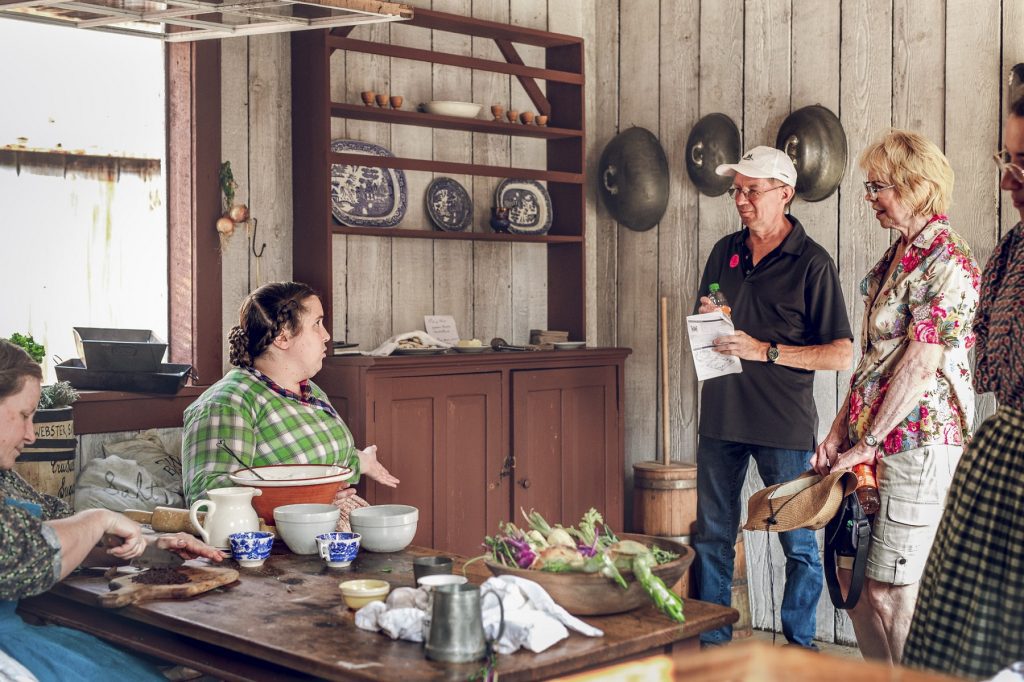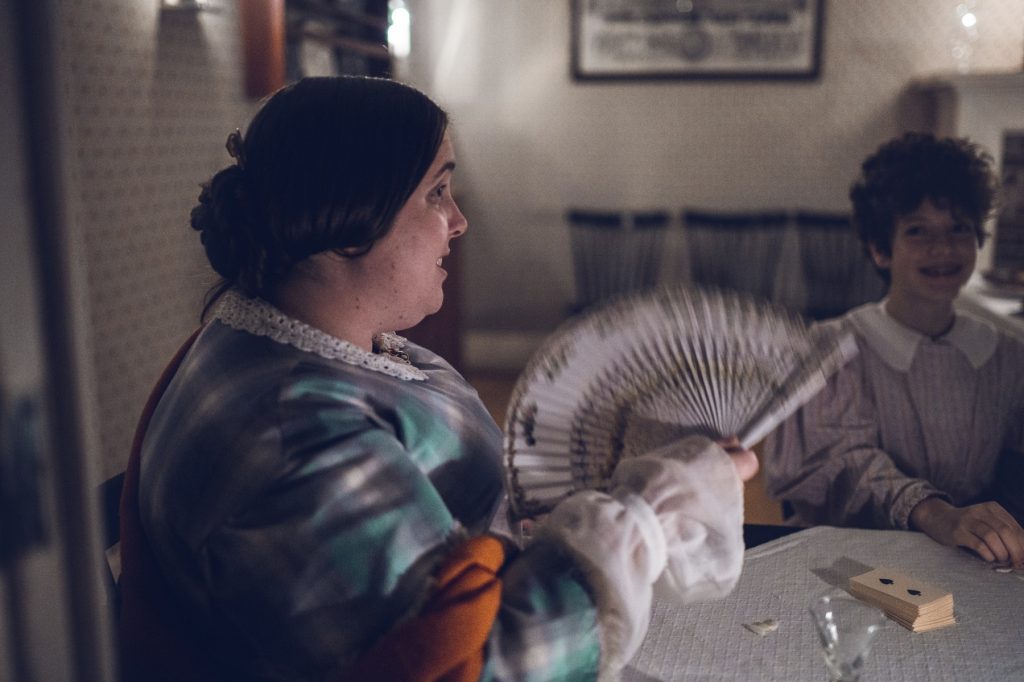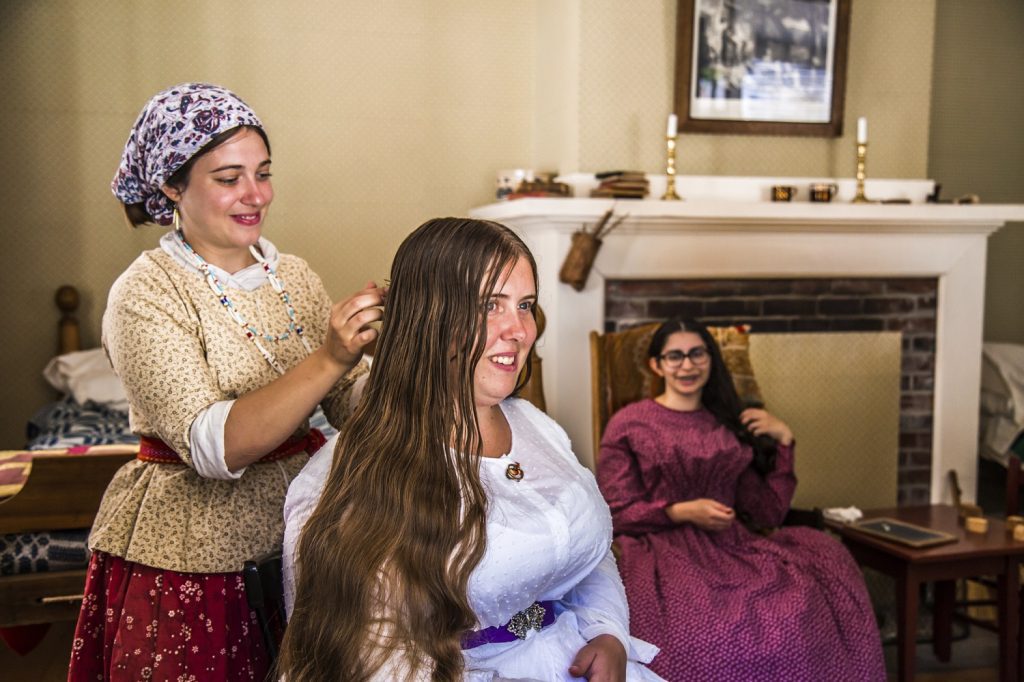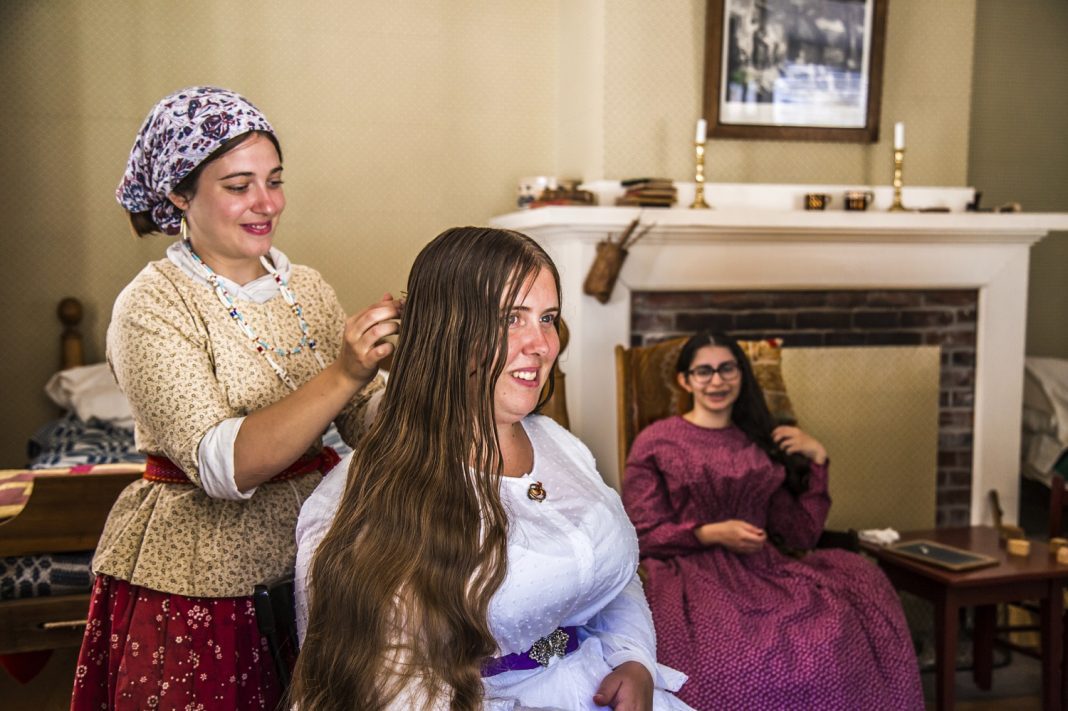Submitted by Metro Parks Tacoma
Elizabeth Korsmo wears corsets. She sews aprons and made mulligatawny soup from an 1844 recipe for “Souper-bowl Sunday”. But before you jump to any Victorian gender stereotypes, she’s also into chemistry, chopping wood, throwing tomahawks and appearing in TikTok beauty videos.

Korsmo is lucky enough to be working and volunteering in her passion subject: history. And as a volunteer history interpreter at Fort Nisqually Living History Museum, that can take her to some activities that wouldn’t surprise any Victorian women – but might raise a modern eyebrow or two. In other words, she’s a perfect Metro Parks Tacoma volunteer to interview for Women’s History Month.
“I have a list of clothing myths about a mile long,” says Korsmo with a smile. “Probably the one I get asked about most often is about corsets.”
Wearing corsets – and answering questions about them – is all part of the job if you’re a female historical interpreter at the Fort. Built in Point Defiance Park as a re-creation of the Hudson’s Bay Company fur trading and farming post originally located in what is now DuPont, Washington, Fort Nisqually’s goal is to bring history to life. And its 200-plus volunteers are a big part of that. During special events like the Candlelight Tour and Brigade Encampment, as well as regular open hours, the interpreters dress in historically accurate clothing, work in the smithy, kitchen or other heritage 1850s buildings, and interpret history to visitors.
It’s something Korsmo, who has degrees in both chemistry and museum studies, clearly loves.
“I’ve been doing historical costume and re-enactment since I was 17,” she says. “When I moved to the area in 2013, I was looking for something to get involved in and knew some people from the Fort in my sewing group. They suggested I join them, and I’ve never looked back.”

Despite the fact that Korsmo is highly equipped to do the job – she worked as a paid Fort staff interpreter for five years, is now the curator for the Tacoma Historical Society and in her spare time runs a blog detailing her many historical sewing and cooking research projects – the gig still has challenges, starting with packing her bags.
“I actually find 1850s corsets really comfortable to wear and easy to move in, provided that they are properly fitted,” Korsmo says. “I can sing, dance, run, hike, move furniture, play croquet, climb fences, pick fruit, chop wood, throw ‘hawks, garden and even take a nap in full 19th-century gear. But it’s very uncomfortable to drive a car in a corset. So I pack one big bag with my dress, corset, petticoat, chemise, drawers, shoes, stockings, apron, bonnet and shawls; and another with whatever project I’ll be working on during my volunteer shift: sewing tools and fabrics, or kitchen equipment and ingredients.”
One thing visitors don’t often realize about Fort Nisqually, Korsmo says, is that volunteers are using real, working tools – including inside the kitchen. But as a self-declared history nerd, Korsmo does have her own preferred items, like a marble mortar and pestle for grinding spices.
And then there’s the make-up. Fans of the Fort’s incredibly successful TikTok account will be well aware that Victorian women had their beauty regimes just as much (or more) as 21st-century women. They just looked a little different. One video with over 696,000 views begins with Korsmo explaining, tongue-in-cheek, that “the only thing a decent woman needs to look her best are good diet, dressing warmly, exercise and a sweet disposition…but we don’t have time for that!” She goes on to explain how to make and apply a Victorian rouge, lip salve and burned cork for eyebrows, ending with the punchline that “since we only ever wear makeup in the evening, most of our problems are not visible by gaslight!”
Other videos with thousands of views include an explainer of melting animal fats to make hair pomade (and why Victorians loved it), and videos that ‘spill tea’ and salacious 1800s gossip at the same time.
“I actually do use my chemistry training here,” says Korsmo. “Knowing how to take ingredients like rosemary water, safflowers, pig lard or chalk to create historically-accurate beauty products comes in handy. And the videos are a lot of fun!”

Korsmo loves volunteering for the Fort’s big events, which take hundreds of interpreters. But her favorite times are the two days a month during regular hours, where she gets the chance to dive deep into conversations with visitors about history – and especially, what women did.
“I love getting to nerd out about what I’m reading or interested in,” she says, “and talk to the other volunteers about aspects of history they’re passionate about, like tinsmithing or agriculture. If I don’t know the answer I’ll go and research it. Next thing you know I’ll have a half-hour presentation on 19th-century birth control or whatever.”
Are there any common women’s history myths she needs to bust?
“I’d say the main myth is that their lives were somehow simpler than ours,” Korsmo says. “They were living in very different social environments from us, generally with limited political and economic opportunities, but even so there’s a lot of variety in their experiences and activities. I really encourage people to come visit the Fort – especially for the big events, but also on a quiet day, for the conversations with interpreters.”
VISIT: Fort Nisqually Living History Museum is open 11 a.m. – 4 p.m. Wednesday to Sunday, with heritage skills workshops and virtual events offered regularly, as well as the Indigenous Voices podcast and history video TikTok channel. The next big event is Klahowya on April 23.
VOLUNTEER: Volunteers at Fort Nisqually play all kinds of roles, from re-enactment to research and behind-the-scenes support. Apply here.













































